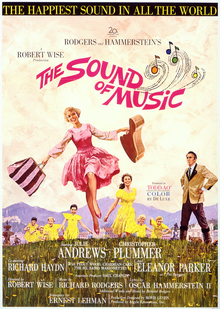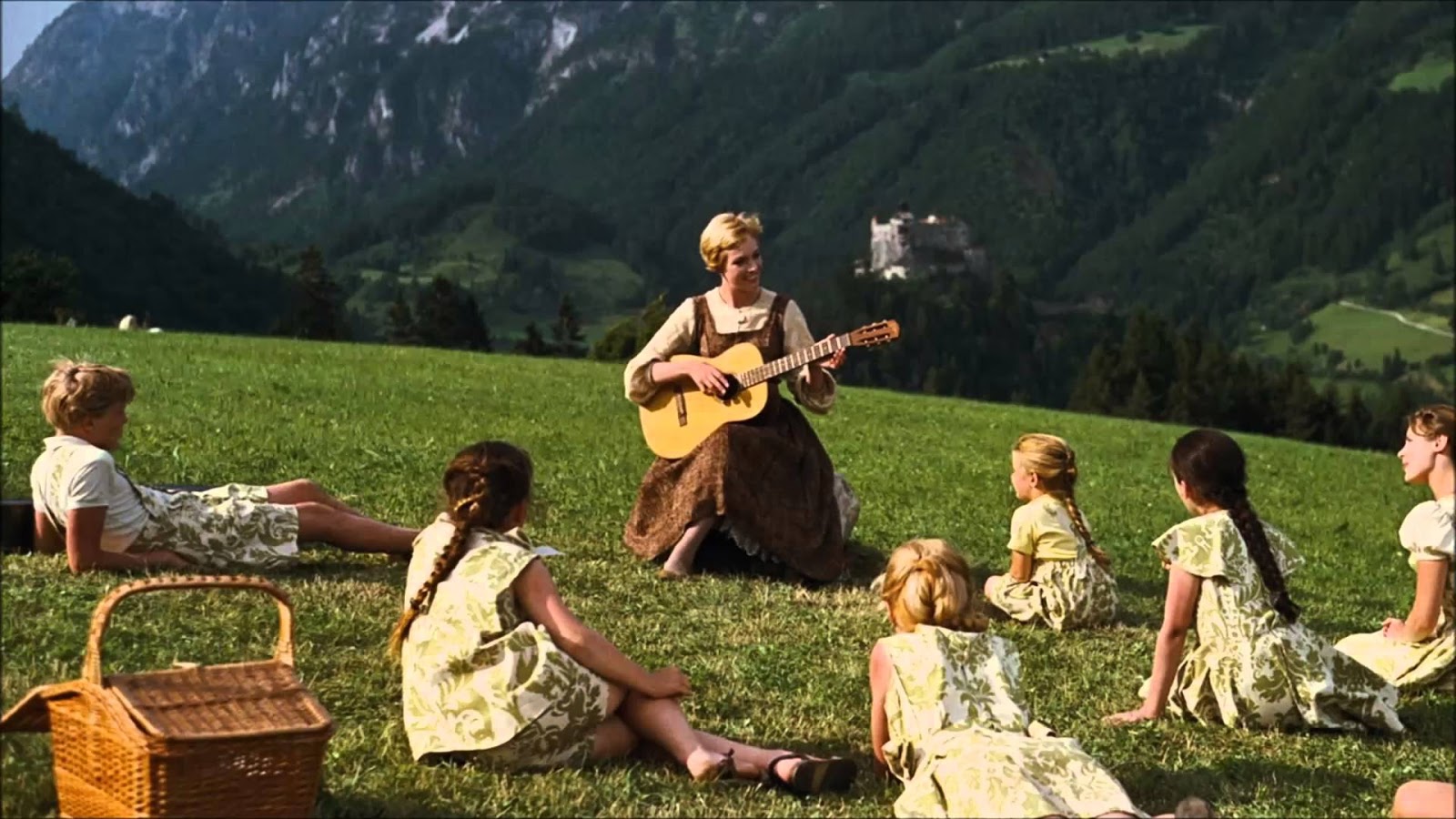Few scenes are as iconic to American viewing audiences than that of Julie Andrews signing her heart out amidst a sweeping landscape of the Alps. So it might come as a surprise that the film is not well known in Austria, where the story is set.
The story of a cheerful governess who brings music, life, and love back into the lives of one family right before that family is forced to flee Nazis is known the world over. It was based, loosely, on the real life story of Maria Von Trapp, whose memoir, The Story of the Trapp Family Singers, was published to help promote the family following the death of her husband in 1949. The rights to the book was eventually bought by German producers. The film The Trapp Family, and its sequel The Trapp Family in America, were produced with soundtracks that used mostly traditional Austrian folk songs. These two movies were immensely popular throughout both Europe and South America. They caught the attention of Paramount Pictures, who purchased the American film rights, with the aim of making the tale into an Audrey Hepburn vehicle. The studio eventually dropped the project, but one of the directors who had been involved thought the story had potential as a Broadway musical. The play's producers had originally intended to use the same Austrian folk songs that the two German films used. However, something was missing, they felt, so they approached Rodgers and Hammerstein to write one additional song. The composing duo felt their style was incompatible with the folk songs in the rest of the musical. However, they said, if the producers were willing to wait while they wrapped up their current project, they would write the entire musical book for The Sound of Music. Rodgers and Hammerstein were immensely popular composers at this stage in their careers; the producers of course said yes!
The wildly successful stage musical led to a different movie studio looking into making a film of the story, 20th Century Fox. It is important to note they purchased the film rights to musical, not to the book itself. The real Maria Von Trapp- and the real Von Trapp family- would be involved in the production, but it was by no means an accurate story. Maria had married the family patriarch out of convenience and friendship, rather than love, and Captain Georg Von Trapp had been a loving family man, rather than emotional distant, as is seen on the screen. Likewise, the film's climatic, 11th hour escape from Nazis was nowhere near so dramatic. In reality, the family had taken a train out of the country, and simply never returned. The family had also been disappointed that the traditional folk songs were not used; instead the Roger and Hammerstein songs were, with addition of two new songs even!
At the time production was beginning, Julie Andrews had just wrapped up filming on Mary Poppins, but that movie had not been released yet. She was an unknown quantity on screen. However, the director, Robert Wise, was shown some of reels from filming and, in his words, he "snapped her up," before some other studio could. Andrews herself had some reservations, both about the contract the studio wanted her to sign, and about the almost cloying sweetness in the stage production. They negotiated the contract down to two films, instead of four, and assured her that they too wanted that sweetness tempered. Wise had considered several different leading men to play opposite Andrews, and eventually managed to talk Broadway star Christopher Plummer into the role by assuring him they would improve the character of the Captain Von Trapp. Unfortunately, the character was never satisfactorily changed enough for Plummer, who found the entire film "schmaltzy." He drank throughout filming, and called Andrews "Miss Disney," though they became good friends later on. Ironically, " Miss Disney" would sing the song "Supercalifragilisticexpialidocious" for the child actors between takes; they thought she had made up the song, at the time! The child actors were found through country-wide searches in both the United States and in the United Kingdom. It would prove a memorable and challenging undertaking. The youngest nearly drowned when the boat toppled in a musical number; she was saved by one of the other children as Andrews, who was supposed to catch her had been pitched off the other side of the boat when it capsized. A less dangerous challenge to the crew was when the oldest boy underwent a growth spurt. Since the height of the children had to be in lock-step to get the wanted visual effect, he went from standing on box to the next oldest child actor needing to wear risers on her shoes!
All the hard work paid off though. True, the film wasn't- quite- universally revered. Some critics found the family oriented tale overly sentimental. Film-going audiences' dollars said otherwise though. It became the highest grossing film of 1965, broke box office records in 29 different countries and, for a period of five years, became the highest grossing film of all time. It arguably saved the studio from bankruptcy after they sunk too much money into the epic Cleopatra. The Sound of Music also won numerous awards, including Best Picture and Best director, and has been selected by the Library of Congress for preservation in the National Film Directory. The only two countries the film is not popular are Germany and Austria, for a variety of reasons. The German films The Trapp Family and The Trapp Family in America were- and still are today- well loved there. Additionally, some Austrians were upset at the inauthentic costumes, and as well as the replacement of their traditional folk songs with Broadway tunes. The Nazi scenes were particularly unpopular in Germany. One theatre manager showed an unauthorized cut of the film that left out much of the third act!
Still, despite the accusations of its inauthenticity and schmaltziness- or perhaps even because of these things- the film is indelibly woven into pop culture's memory. After all, who can resist The Sound of Music?



Post a Comment